The King of the fruits, mango, has arrived. People, in spite of the lockdown have begun to enjoy it.
Mango has a history of about 5000 years. It has originated in the Eastern Himalayas on India-Myanmar border. Mango is a symbol of love and affection. It is said that Buddha meditated under the cool shade of a mango tree.
Mango got its name from Malayalam word mangga. India is the largest mango producing country in the world accounting to 50% of the world’s production with 283 varieties of mangoes.
The fruit has immense nutritional value. It contains vitamin A, C, E and K, and vitamin B1 to B6 and B9 and carbohydrates etc.
The Mughal kings were very fond of mangoes. Their passion led to the grafting of numerous varieties of mangoes including the famous Totapuri.
Totapuri is like a parrot’s beak in shape. It is one of the cheapest varieties of mangoes. It is widely grown in South India. It is sour and sweet in taste – either it is ripe or raw. It is mostly used for making sauce. Totapuri sellers on carts are usually seen near schools and the school children enjoy it by sprinkling salt and chili powder over it. The taste of bhelpuri becomes great when gratings of Totapuri are added to it. It is also used for making Murrabah (jam).
The Mughal emperor Akbar is said to have planted a mango orchard of 100,000 trees at Lakhi Bagh in Darbhanga Bihar, while Jahangir and Shah Jahan ordered the planting of mango saplings in Lahore and Delhi and they also introduced mango-based desserts.
The top most varieties of mangoes are:
Alphonso or Hapus

It is one of the best and expensive varieties of mango. For its finest taste it is known as the king of the mangoes. It is grown mainly in Western India. This variety is named after Alfonso de Albuquerque, a Portuguese general and military expert who established Portuguese colony in India during the 15th century. The Portuguese were trying to create a little hard non-juicy variety of mangoes by the method of grafting so that it could be ‘cut and served.’ They wanted to send non-juicy mangoes to their country and other parts of Europe as they are convenient to pack and export. Hence, Alhponso came into existence. It is grown in four states–Karnataka, Maharashtra, Madhya Pradesh and Gujarat. The best Alphonso is from Ratnagiri, Maharashtra.
Chausa
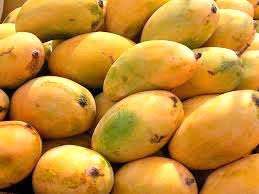
Sher Shah Suri introduced the Chaunsa variety of mango to celebrate his victory upon defeating the Mughal emperor Humayun. Chausa is named after a town in Bihar. It is a luscious sucking variety of mango.
Dasehri
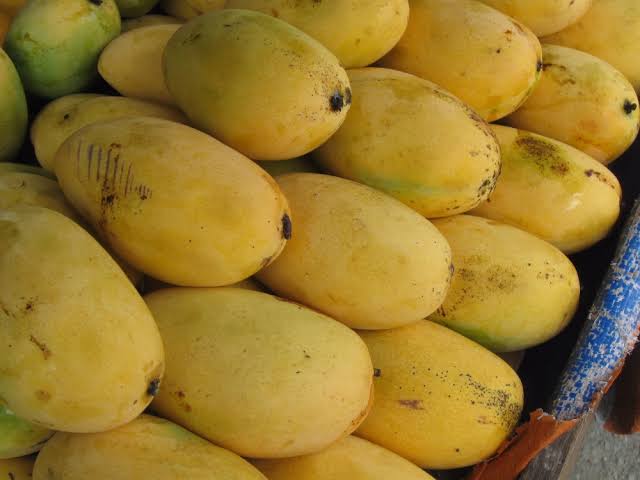
This originated in a village near Kakori in Lucknow district. It is a sweet fragrant variety of mango that is grown in North India and also in Andhra Pradesh. Malihabad in Uttar Pradesh is the largest producer of Dasheri mango.
Mulgoba

Mulgoba is one of the best mango grown in Tamil Nadu state and other parts of South India, Mulgoba is known as the “Alphonso of South India.”
Langda
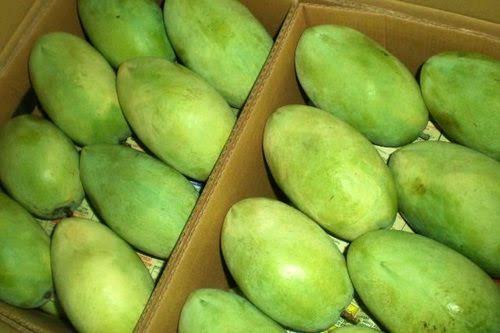
Langda is available all over India. It is a juicy mango and its flesh is fiber-less. It is sugary and soft. Even after ripening it maintains its green colour. Langda means lame. It got its name from its cultivator who was a lame man.
A famous poet Saghar Khayyami has used the Langda variety in his verse:
Tajroba hai hamay mohabbat ka
K dil hasino se pyar karta hai
Warna langdo pe kon marta hai
Aam teri khush naseebi hai
(I have the experience of love/ That I know my heart falls for the beautiful/ Mango, it is your good fortune/ Otherwise who dies for a lame)
Banganapalli or Benishan
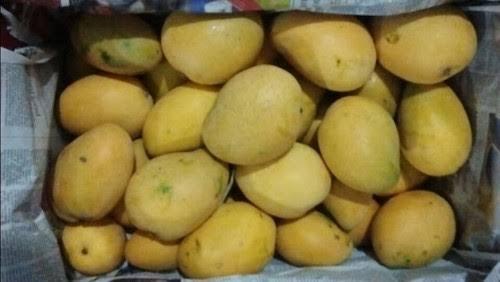
Benishan mango is also known as Banganapalli. It is one of the most common varieties of mango which is cultivated in cultivars of mango in the town of Banganapalle in Andhra Pradesh. These mangoes are large in size and weighing on an average 350-400 grams.
This mango is being grown for over 100 years in Andhra Pradesh. Benishan is the favourite variety of people in Hyderabad.
Kesar
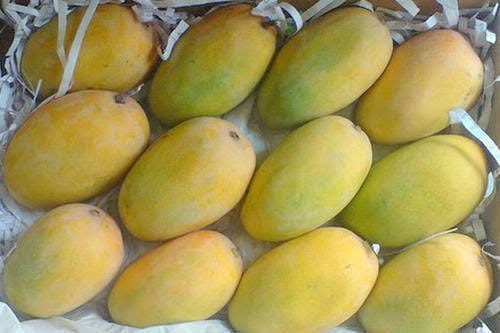
It is the second best and expensive variety of mango after Alphonso, which is mostly exported to other countries. It is grown in and around Ahmedabad in Gujarat. This variety was first cultivated by the Nawab of Junagarh in 1931. In 1934 it was named as Kesar by the Nawab as its pulp resembles saffron colour.
Neelam

It is a highly relished variety of mango. It is primarily grown in Andhra Pradesh, Karnataka and Tamil Nadu. Neelam is famous for its beautiful shape, taste and divine floral aroma.
Sindura

Sindura is elongated in shape, because of its extreme sweetness and flavour it is also known as Honey Mango. The flesh of this mango is soft and melts quickly. Therefore, it cannot be preserved for a long time and should be eaten within two to three days of it ripening.
Different varieties of mangoes are produced by the method of grafting. Grafting and budding are horticultural techniques used to join parts from two or more plants to grow a new variety.
Haji Kalimullah Khan, popularly known as Mango man, is an Indian horticulturist and fruit breeder from Malihabad, Uttar Pradesh. A school drop-out he is known to have grown over 300 different varieties of mangoes on a single tree using grafting techniques. He named some of the new varieties after the celebrities such as Akilesh Yadav, Sachin Tendulkar, Sonia Gandhi and Aishwarya Rai.
An incredible varity that he has produced is Anarkali. It has two layers of skins and two different layers of pulp, each having a different taste. Kaleem Ullah Khan has been awarded Padma Shri in 2008 for his contribution to horticulture.
Mirza Ghalib, an internationally known Urdu poet, loved good food, wine and mangoes. He loved mangoes so much that he has penned something in its praise.
Mujhse poocho, tumhen khabar kya hai
Aam ke aage neyshakar kya hai…
Baagh-baano ne baagh-e jannat se
Ya ye hoga ke fart-e rafa’t se
Bhar ke beje hain sar-ba-mohr gilaas
Angabeen ke, bahukm-e rabb-in-nas
(Ask me, for what do you know?/ A mango is far sweeter than sugar cane/ Perhaps from the great heights above the gardeners of heaven’s orchards/ have sent by the order of God/ brimful of wine filled in sealed glasses).
(Ask me, for what do you know?/ A mango is far sweeter than sugar cane/ Perhaps from the great heights above the gardeners of heaven’s orchards/ have sent by the order of God/ brimful of wine filled in sealed glasses).
In this verse, Ghalib describes mangoes as sealed glasses filled up with wine. He used to cut down the intake of wine in the mango season and preferred mangoes over it.
Once his friend, Maulana Faizal-e-Haque asked him about the best qualities of mangoes, he replied ‘Aam mein buss do khoobia honi chahiye, ek meethe hoN aur bohut saare hoN.’ (Mangoes should have two qualities; they should be sweet and they should be plenty.’
By Waris Ali Khan
